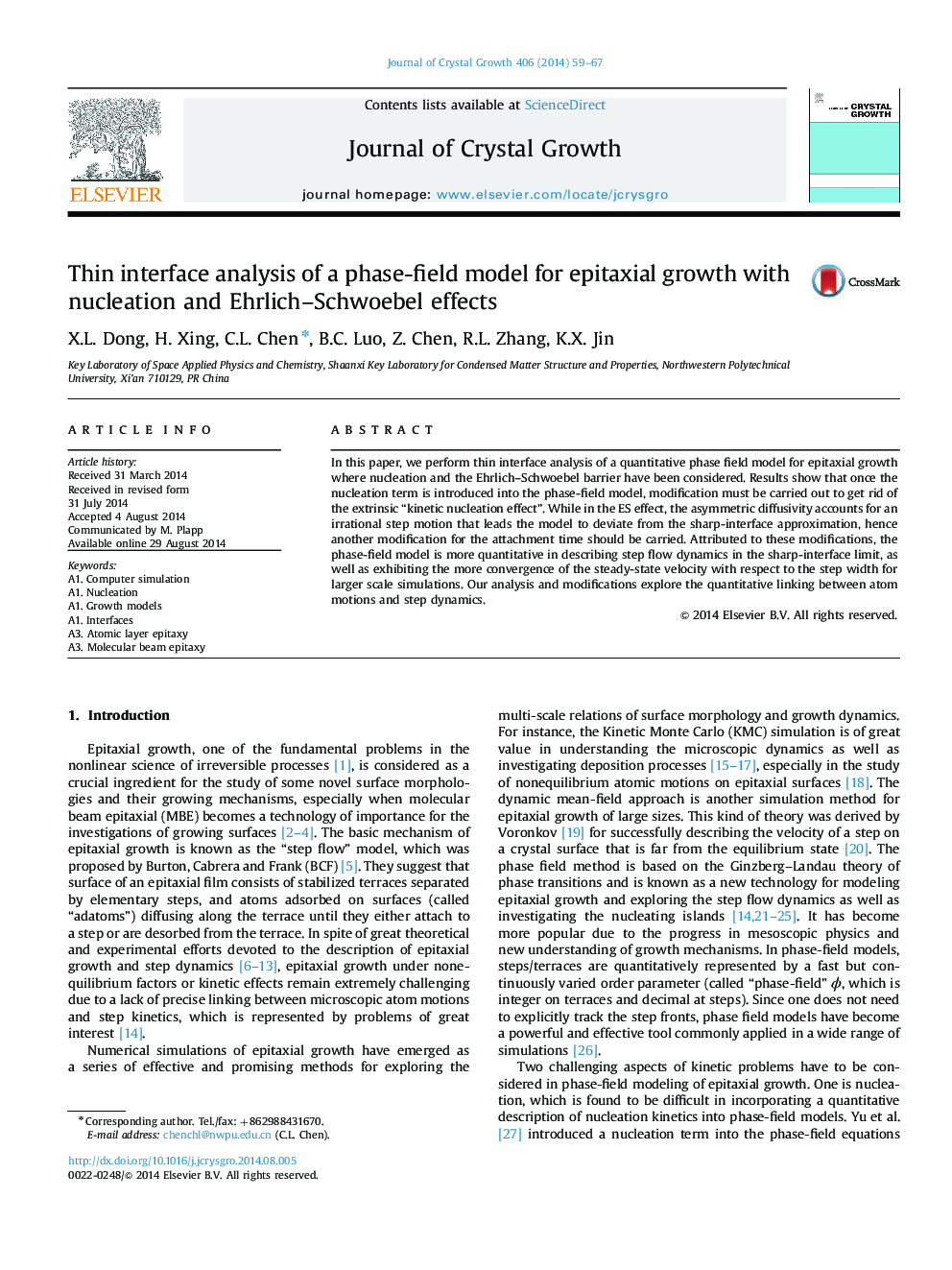| Article ID | Journal | Published Year | Pages | File Type |
|---|---|---|---|---|
| 1790281 | Journal of Crystal Growth | 2014 | 9 Pages |
•We propose thin interface analysis of a quantitative phase field model at the quadratic-order of expansion with the kinetic factors.•A modified model was proposed when the nucleation term is introduced.•The modification has been calculated when the Ehrlich–Schwoebel barrier is introduced.•The convergence of the unmodified and modified models has been quantitatively investigated.
In this paper, we perform thin interface analysis of a quantitative phase field model for epitaxial growth where nucleation and the Ehrlich–Schwoebel barrier have been considered. Results show that once the nucleation term is introduced into the phase-field model, modification must be carried out to get rid of the extrinsic “kinetic nucleation effect”. While in the ES effect, the asymmetric diffusivity accounts for an irrational step motion that leads the model to deviate from the sharp-interface approximation, hence another modification for the attachment time should be carried. Attributed to these modifications, the phase-field model is more quantitative in describing step flow dynamics in the sharp-interface limit, as well as exhibiting the more convergence of the steady-state velocity with respect to the step width for larger scale simulations. Our analysis and modifications explore the quantitative linking between atom motions and step dynamics.
